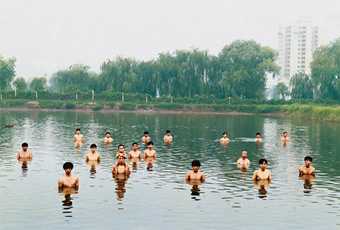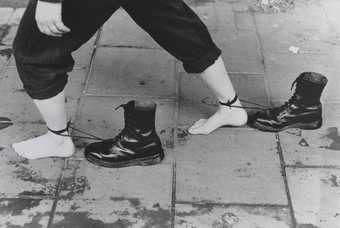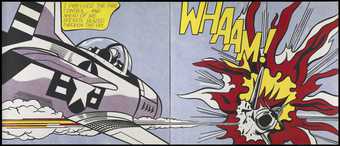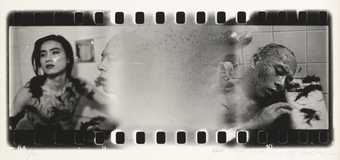
Zhang Huan
To Raise the Water Level in a Fish Pond, Beijing 1997
Performance
Courtesy the artist © Zhang Huan
The collective formed soon after the Tiananmen Square protests, colonising an impoverished area of East Beijing that became known as Beijing East Village.
Much of the art produced was performance based with an emphasis on collective action. This was partly due to the political climate at the time. With avant-garde artistic practice outlawed, artists found the temporary nature of performance art a relatively secure outlet for dissident expression. The group also used performance to blur the boundaries between art and life in order to question, counter and respond to the violent shifts in Chinese culture. Their use of photography instigated a rise in photo and video art produced in China since 1990.
One of the leading figures of the movement was Zhang Huan, who was known for his torturous durational pieces including 65 Kilograms in which he hung upside down while doctors drew 250 ml of blood from his body.
The movement ended in 1994 with a police raid and enforced evictions. Artists associated with Beijing East Village are Cang Xin, Yingmei Duan, Gao Yang, Li Guomin, Ma Liuming, Ma Zongyin, RongRong, Tan Yeguang, Wang Shihua, Xu Shan, Zhang Binbin, Zhang Huan, Zhu Ming, and Zuoxiao Zuzhou.



